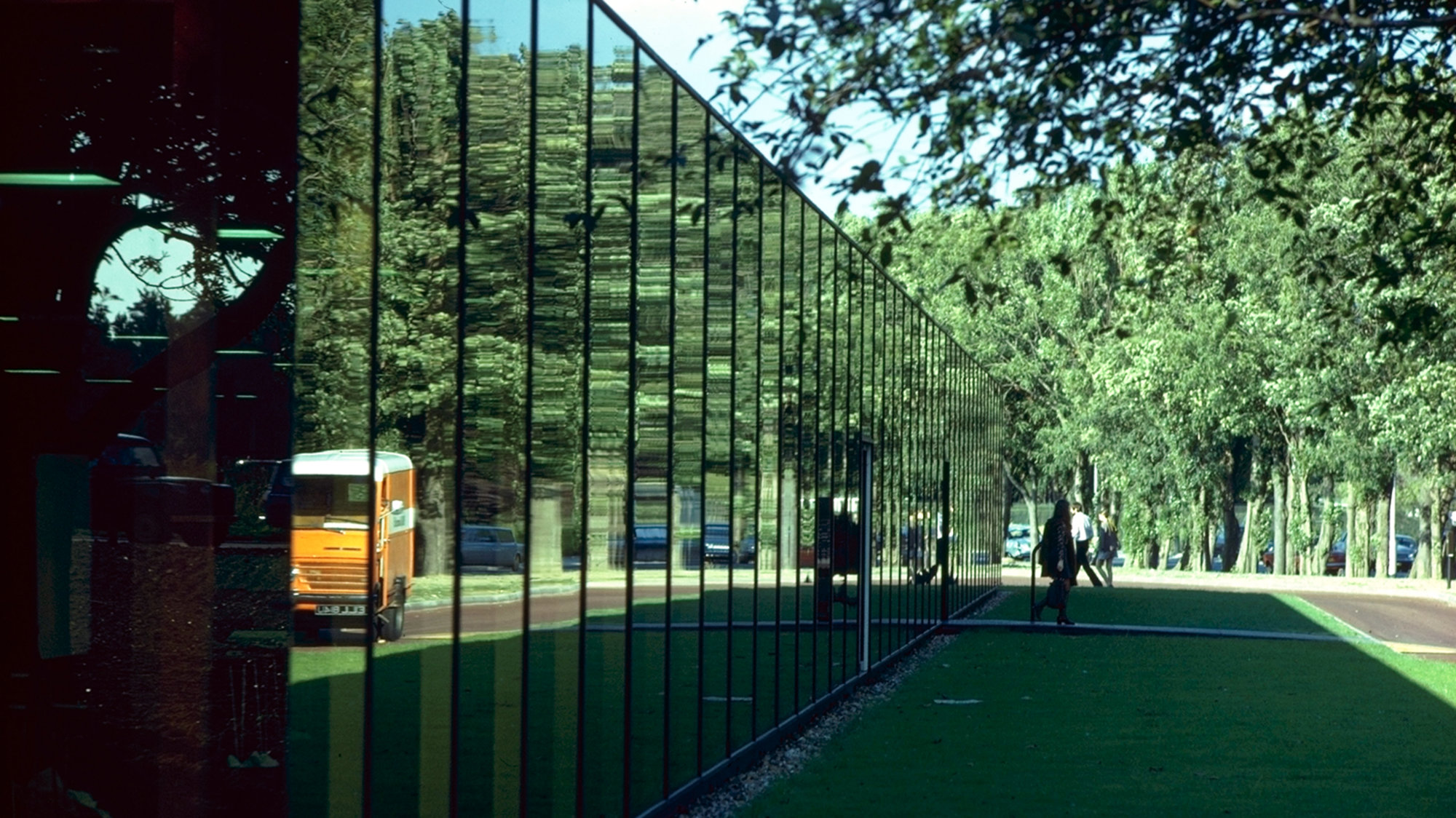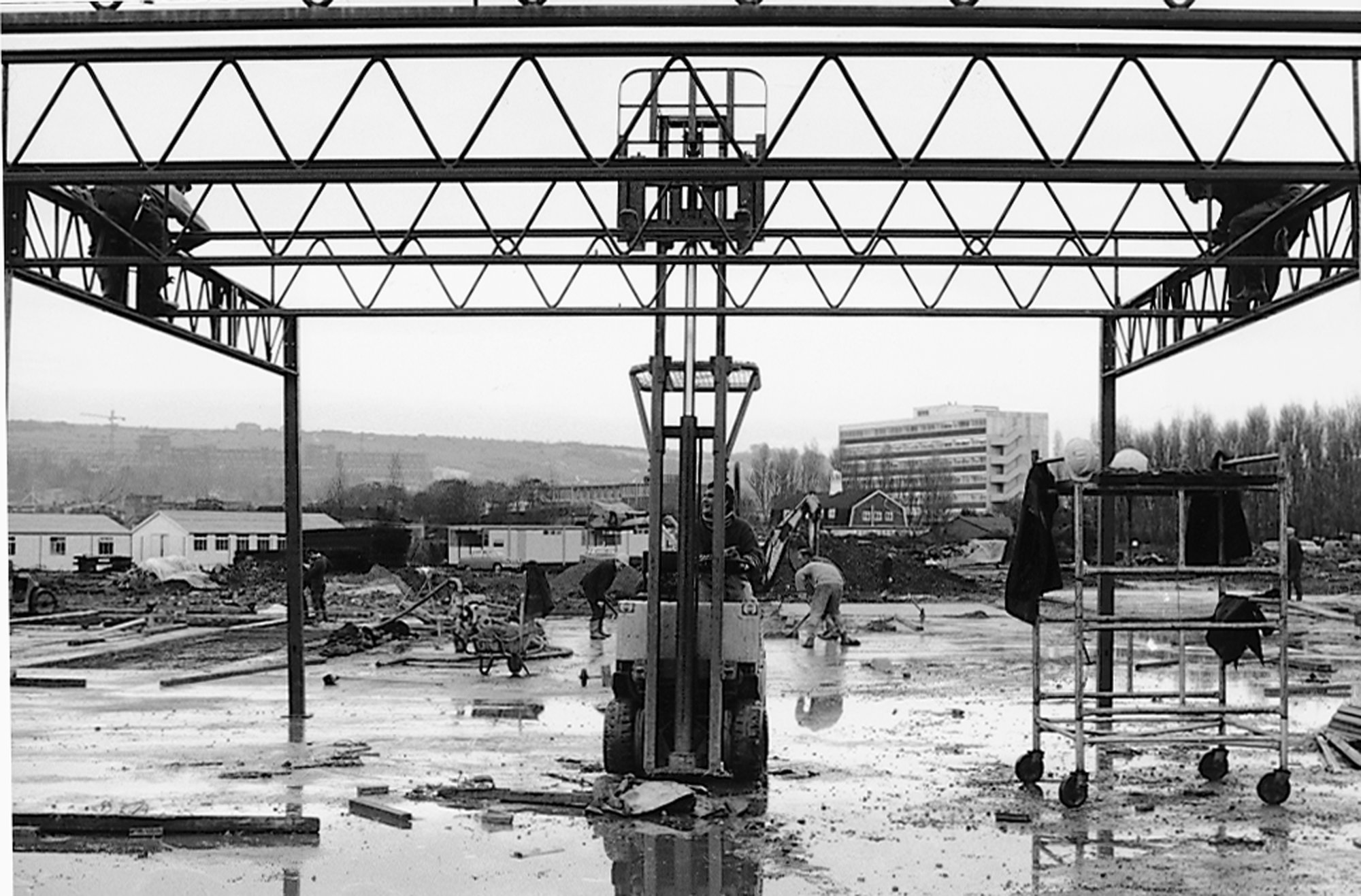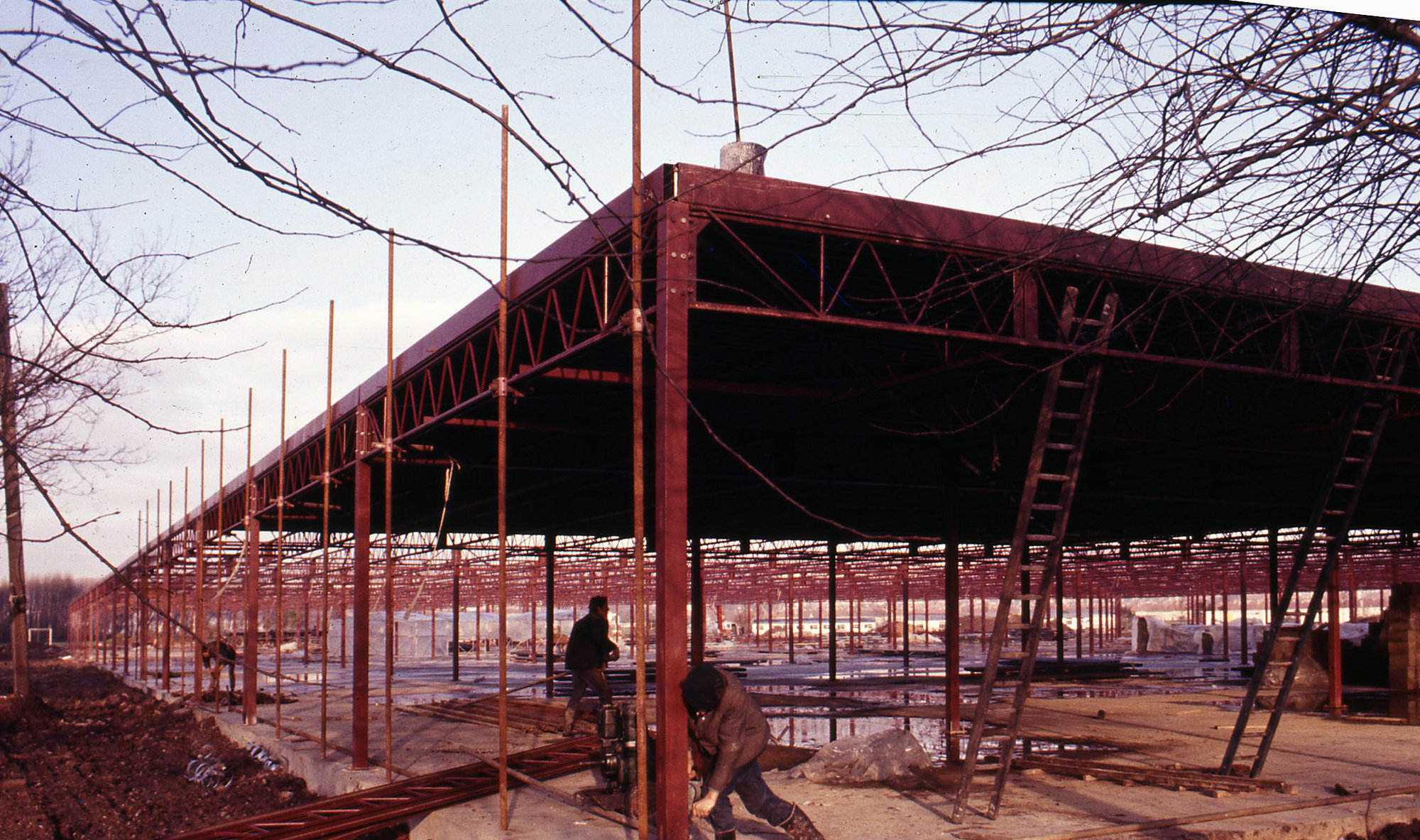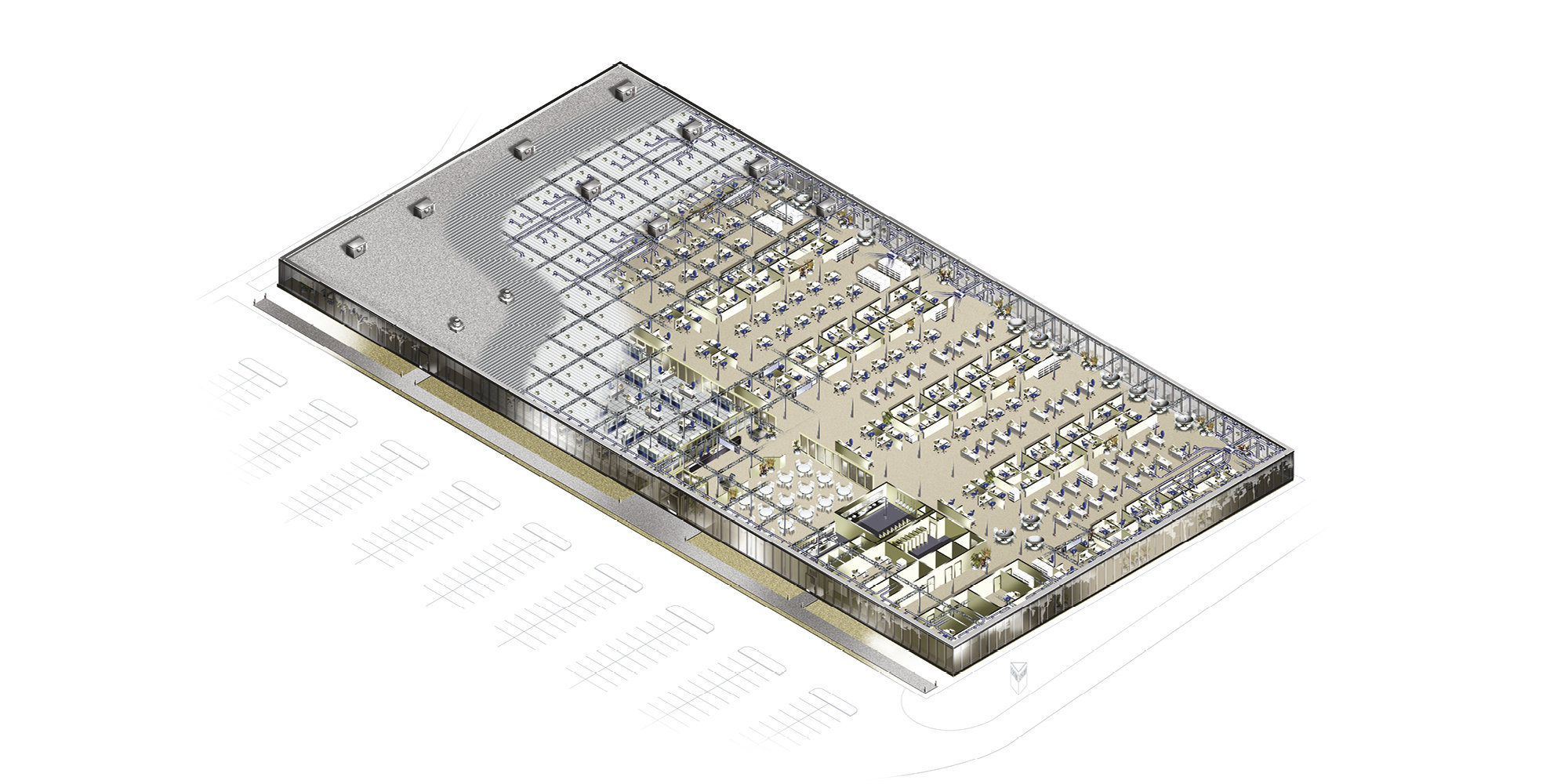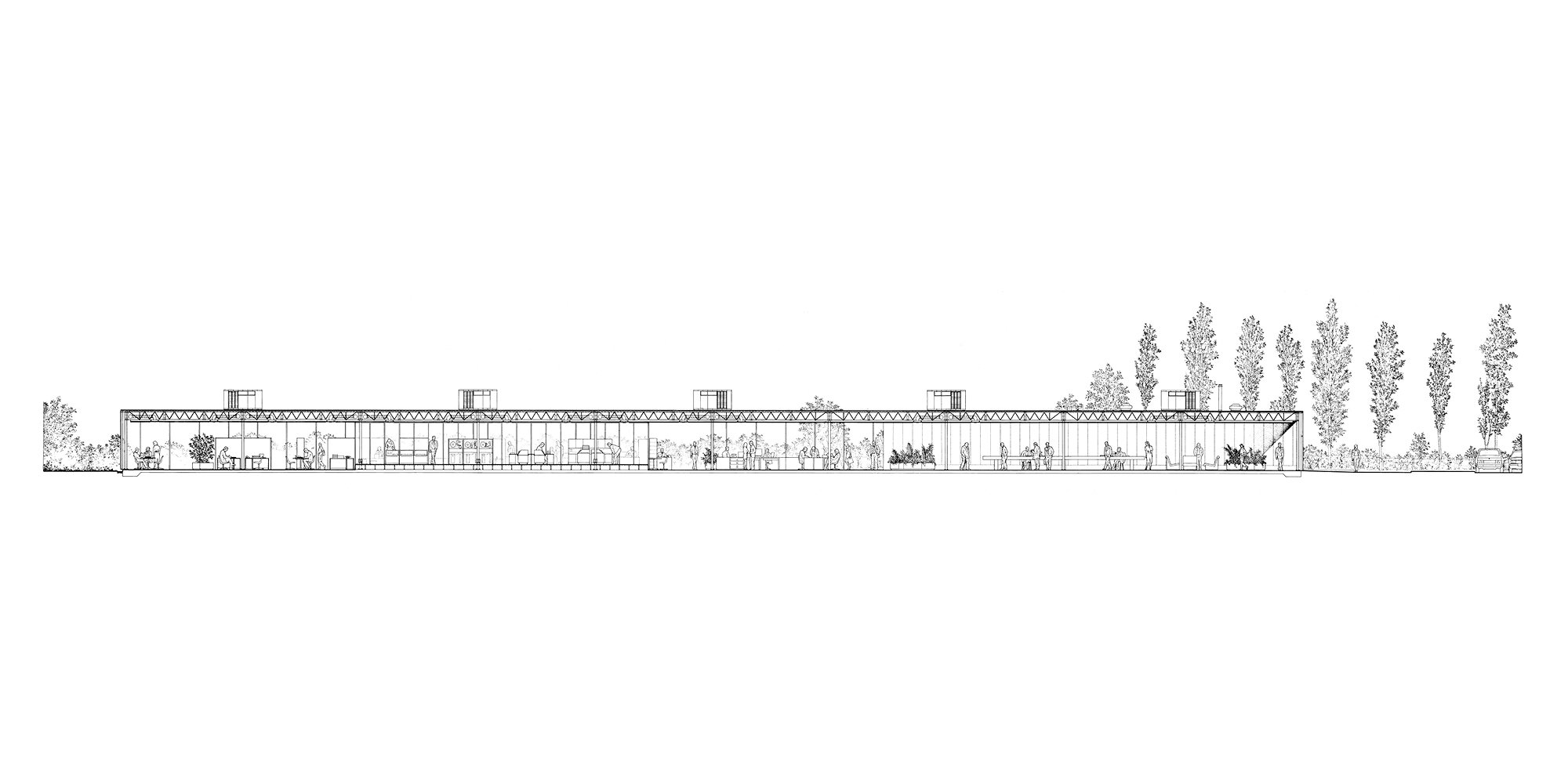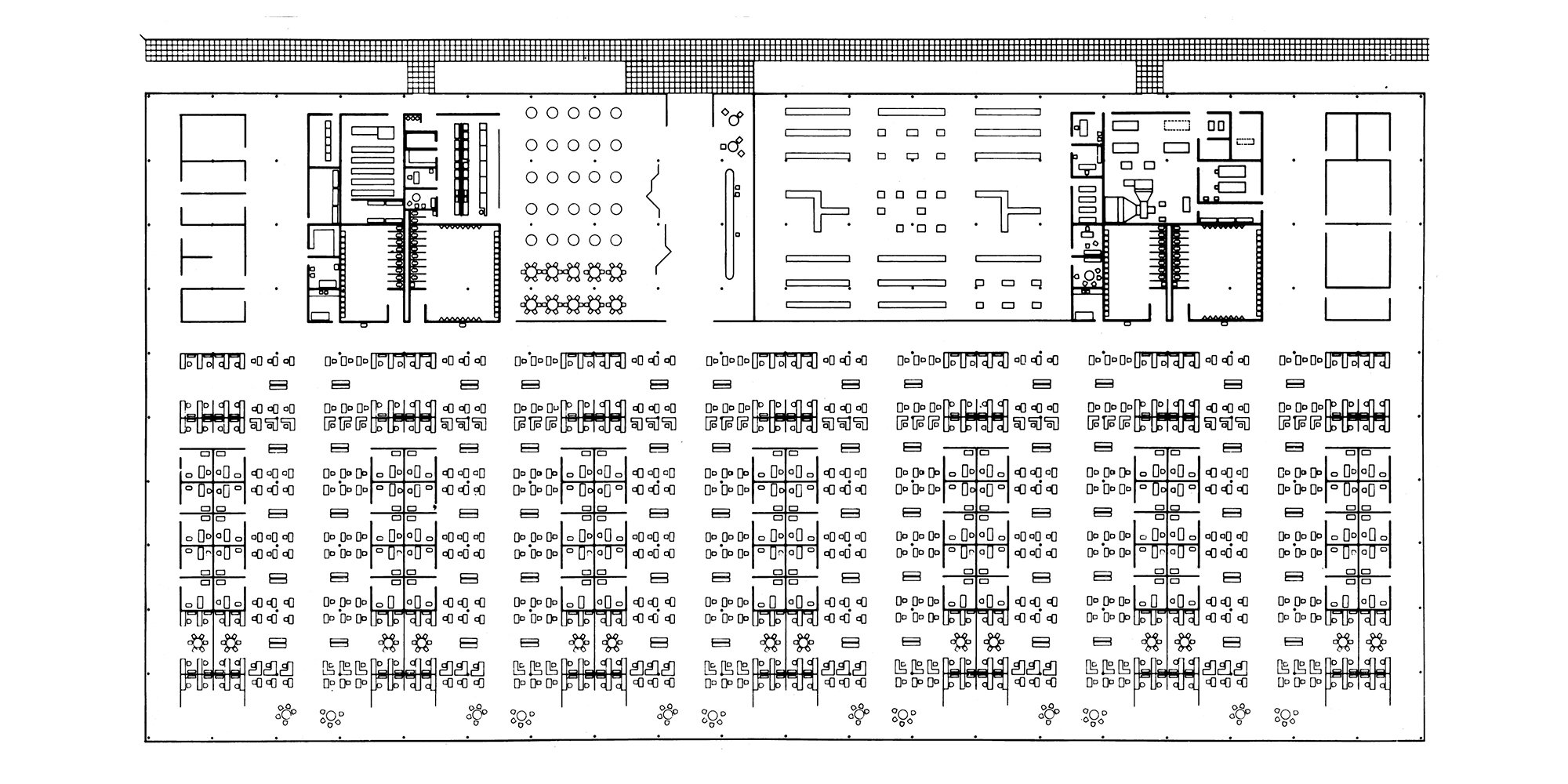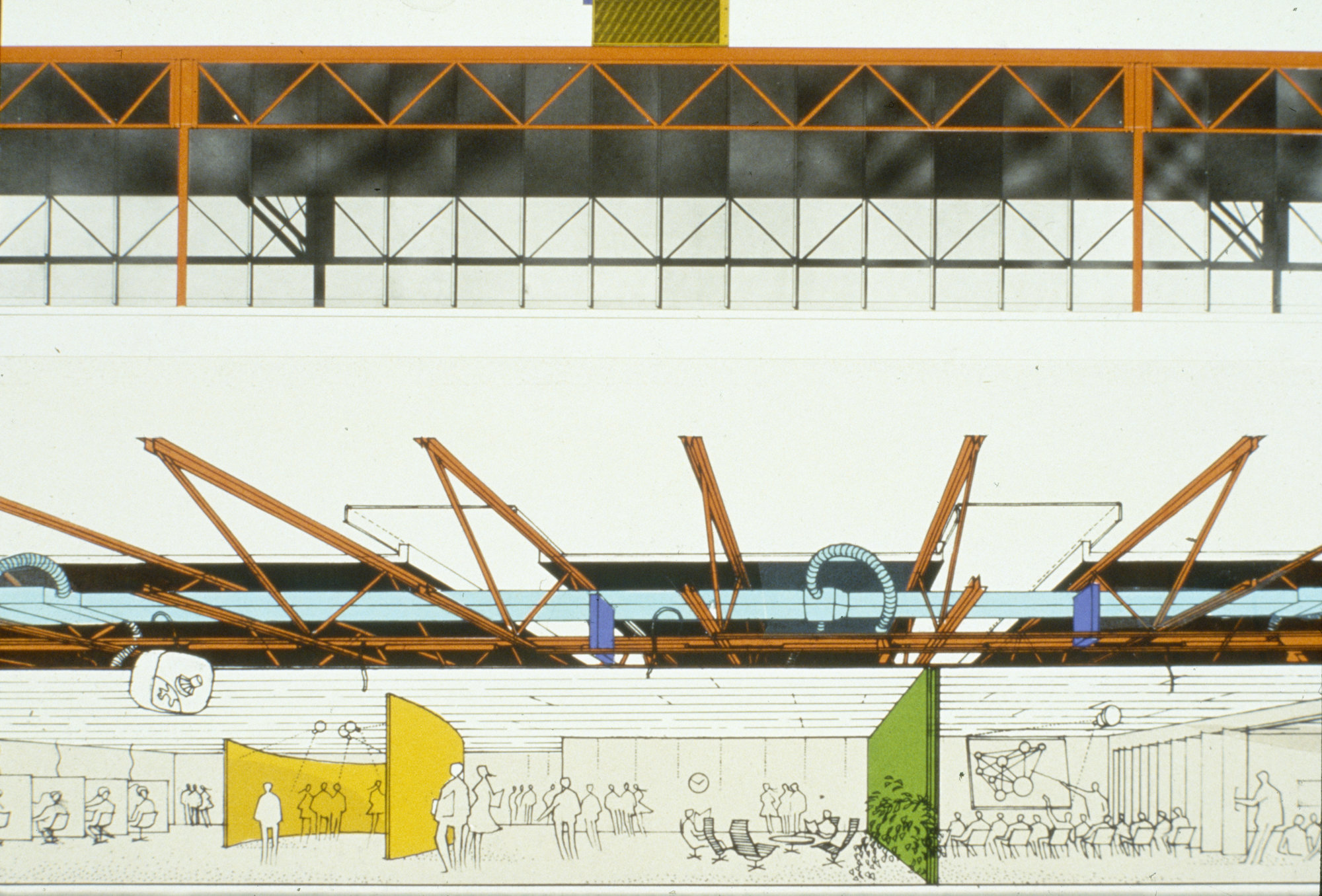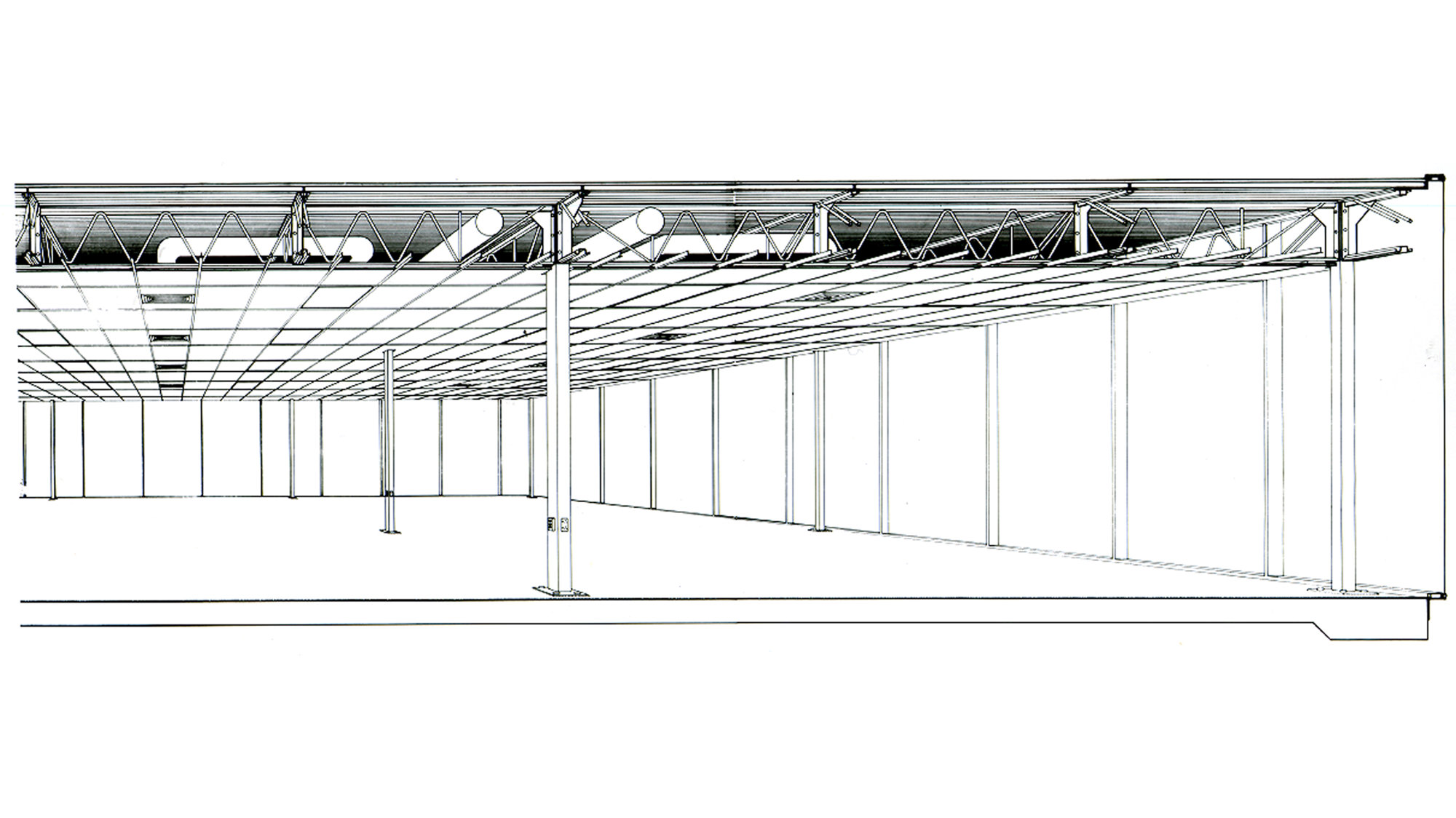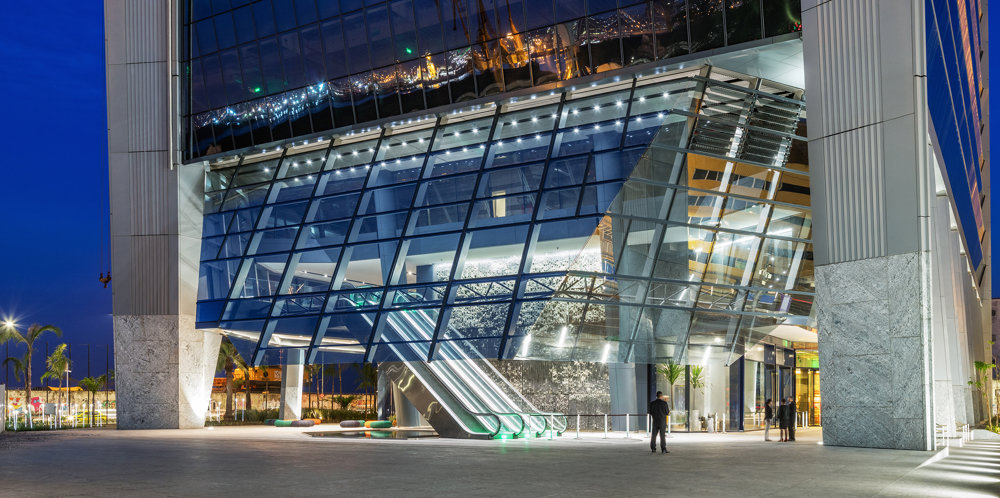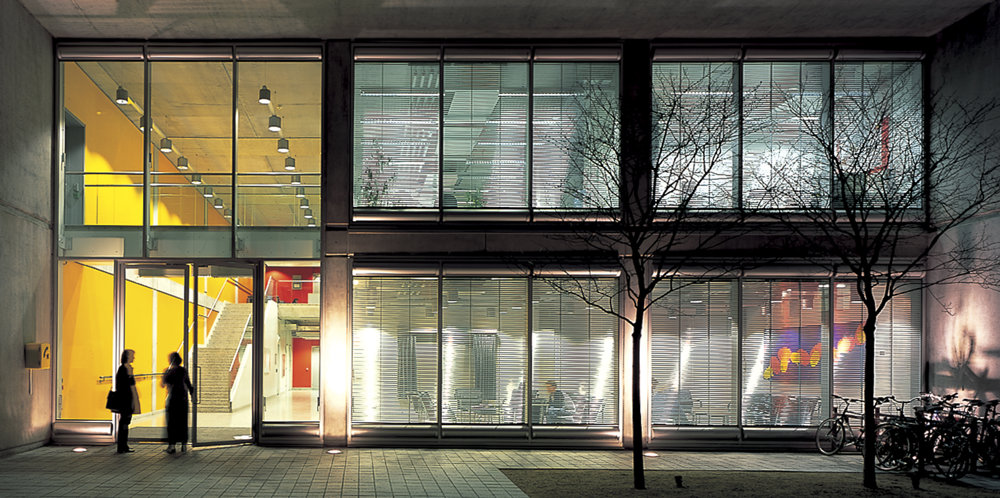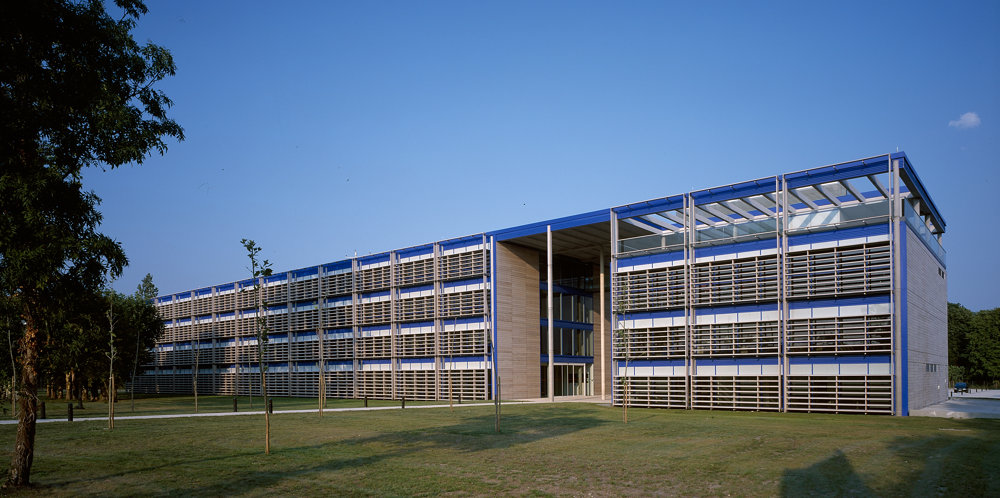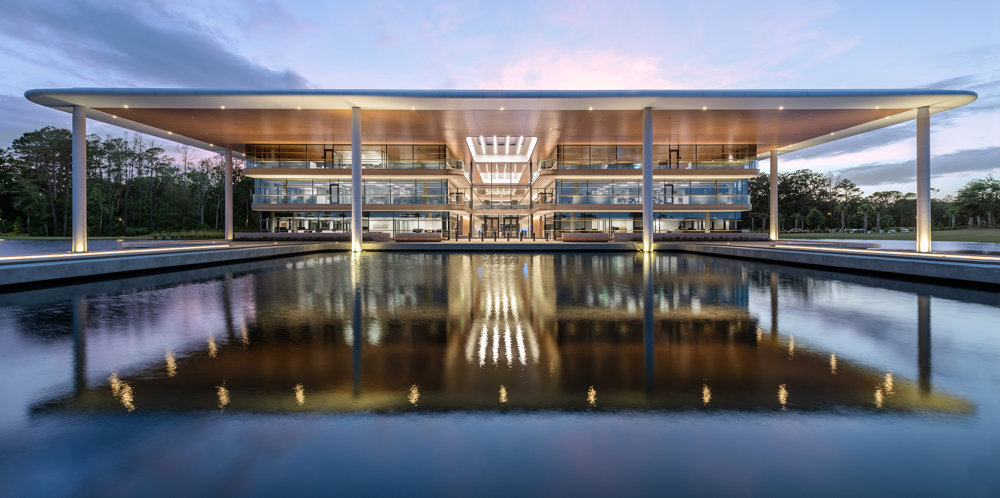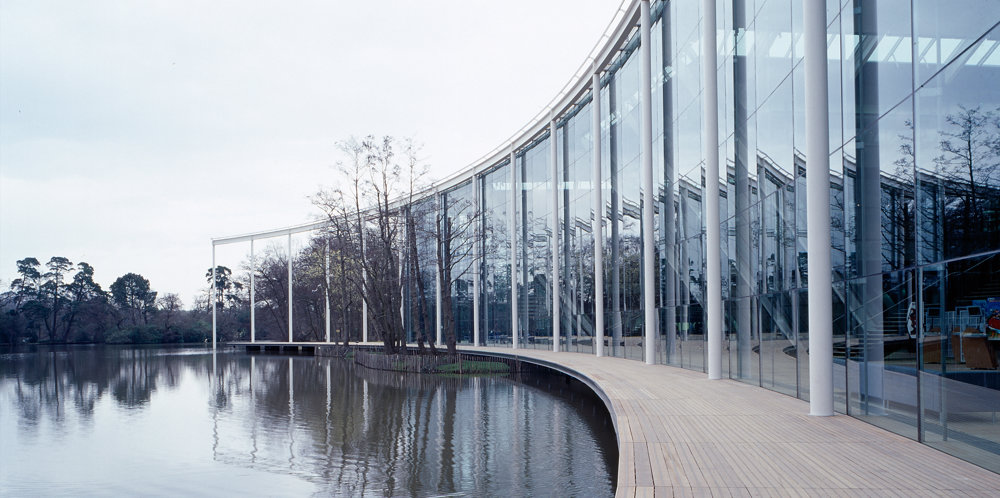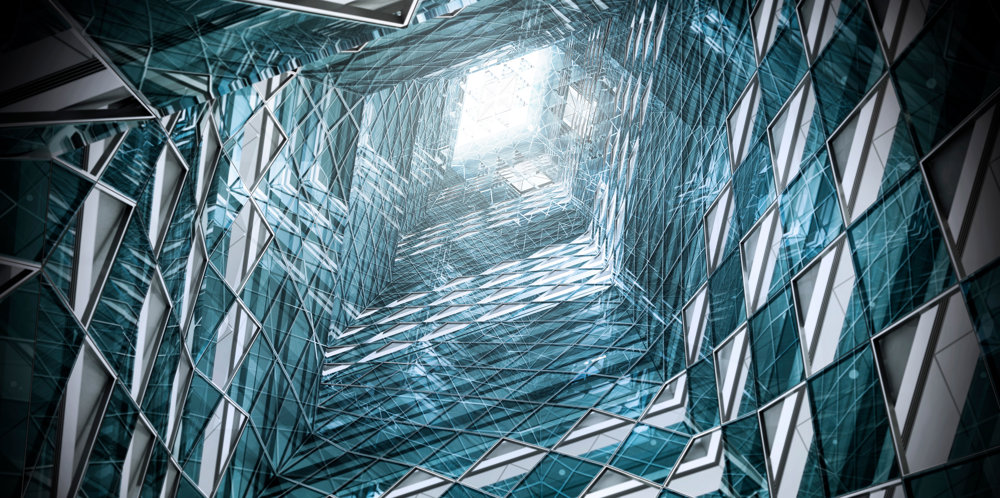The building demonstrates, said the assessors for the 1972 RIBA Award, ‘that architecture can be produced from a tough commercial situation by the exercise of ingenuity and imagination.’
The ‘tough commercial situation’ was the requirement to provide accommodation for between 750 and 1,000 employees within eighteen months at a cost comparable to the cheapest temporary structures. The building was to serve as a temporary head office for IBM while a permanent headquarters was built on an adjoining site. Like many expanding companies at the time, IBM relied on a mixture of permanent and temporary accommodation; in some locations as much as half its office space was in ‘off-the-peg’ structures.
The initial brief was simply to research the available systems and propose a site layout. The response, however, was a report that demonstrated that for the same cost IBM could have a custom-designed permanent building that embraced high architectural and environmental standards. The resulting building is a single-storey, deep-plan structure that groups under one roof a wide variety of functions that would traditionally have sprouted a collection of diverse buildings.
The convention, current in the 1970s, that the computer should have a separate ‘shrine’ was challenged through the installation of a raised floor on top of the floor-slab, allowing a computer room to be integrated within the office building. With all services located in the roof and wiring carried down hollow steel columns, the interior has been able to respond quickly to growth and change. Initially the building housed offices, computers, amenities and a communications centre. But over the years offices have been reconfigured, the restaurant has been moved and the computer room expanded.
Major internal changes have been facilitated by the ability to pop in external doors in lieu of the gasketed glazing panels which otherwise complete the external cladding. The bronze glass reflects the surrounding trees and landscape so that the building merges - almost disappears - into its setting.
Although it was expected to be only a stopgap, the building’s ability to respond easily to changing needs has ensured its long-term survival more than thirty years after its completion.










